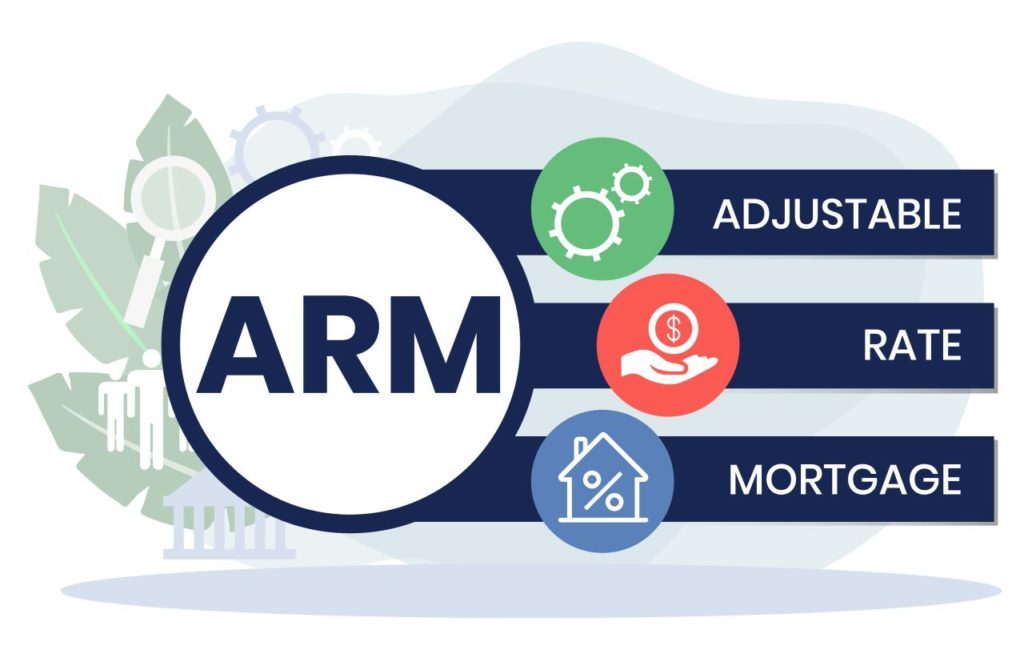The 30-year fixed-rate mortgage is now passing the 8% interest rate mark, the highest rate in 23 years.
In less than two years, the average monthly mortgage payment on a $300,000 loan has increased over $1,100 per month.
However, homeownership remains the primary cornerstone of building financial stability. And, with expectations of potentially lower rates by next summer, many buyers are looking into lower adjustable-rate mortgages (also known as ARMs)
When it comes to borrowing money, whether for a mortgage, personal loan, or credit card, one of the fundamental decisions you must make is whether to opt for a fixed or adjustable interest rate. Adjustable interest rates, also known as variable or floating rates, can be a double-edged sword. They offer both advantages and disadvantages. This article explores the pros and cons of adjustable interest rates to help you make an informed financial decision.
What are the Pros and Cons of Adjustable-Rate Mortgages?
Pros of Adjustable Interest Rates:
- Initial Lower Rates: One of the most significant advantages of adjustable interest rates is that they typically start lower than fixed rates. This can make monthly payments more affordable in the short term, which may be beneficial for those with tight budgets or those expecting an increase in income in the near future.
- Potential for Lower Payments: Adjustable rates are tied to benchmark interest rates, such as the prime rate or the London Interbank Offered Rate (LIBOR). When these rates decrease, your interest rate and, consequently, your monthly payments can decrease, leading to savings.
- Flexibility: Adjustable interest rates can be beneficial if you plan to pay off your loan relatively quickly or if you anticipate a change in your financial situation. This flexibility allows you to take advantage of lower rates without being locked into a fixed rate.
- Protection Against Rising Rates: Some adjustable-rate mortgages (ARMs) offer rate caps or periodic interest rate adjustments. These features can protect borrowers from sudden and significant increases in interest rates, limiting the impact on their monthly payments.
Cons of Adjustable Interest Rates:
- Uncertainty: The primary drawback of adjustable rates is the inherent uncertainty. As interest rates fluctuate with economic conditions, borrowers may face unpredictable monthly payments. This can be stressful and make budgeting more challenging.
- Potential for Higher Payments: While adjustable rates can lead to lower payments in some cases, they can also result in higher payments if interest rates rise. A sudden rate increase can be financially burdensome, and if not properly managed, it may lead to payment shock.
- Risk of Overextension: The initial lower rates of adjustable loans can tempt borrowers to take on more debt than they can comfortably manage. This can lead to financial strain if rates increase or if the borrower’s financial situation deteriorates.
- Complex Terms and Conditions: Adjustable-rate loans often come with complex terms and conditions that can be challenging for borrowers to fully understand. It’s crucial to carefully read and comprehend all the clauses in your loan agreement to avoid unpleasant surprises.

Conclusion
The choice between adjustable and fixed interest rates largely depends on your individual financial situation, your tolerance for risk, and your future expectations. Adjustable rates offer initial savings and flexibility but come with the uncertainty of rate fluctuations. Understanding the pros and cons of adjustable interest rates is essential to make an informed decision. It’s advisable to consult with a financial advisor and thoroughly research your options before committing to a loan with adjustable interest rates, especially if it’s a long-term commitment like a mortgage.
Every situation is different. For a custom review of your circumstance, please reach out to us. We would love to help!



